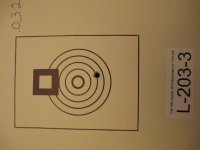Boyd Allen
Active member
https://www.youtube.com/watch?v=JwGRUjg-yeI
After reading the posts in a thread relating to this subject, I did a search on Youtube for "chamber runout" There were a number of videos. This one was at the top of the results. I opened it thinking that I would see some proud smith showing how perfect the runout of one of his chambers was, but it was not as expected. Take a look and tell me what you think. Have done the same test? I do not think that it is commonly done. Maybe it should be.
After reading the posts in a thread relating to this subject, I did a search on Youtube for "chamber runout" There were a number of videos. This one was at the top of the results. I opened it thinking that I would see some proud smith showing how perfect the runout of one of his chambers was, but it was not as expected. Take a look and tell me what you think. Have done the same test? I do not think that it is commonly done. Maybe it should be.


